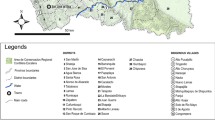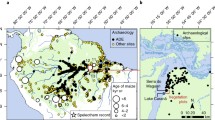Abstract
The landscape of the Sundarbans today is a product of two countervailing forces: conversion of wetland forests to cropland vs. sequestration of the forests in reserves to be managed for long-term sustained yield of wood products. For two centures, land-hungry peasants strove to transform the native tidal forest vegetation into an agroecosystem dominated by paddy rice and fish culture. During the colonial period, their reclamation efforts were encouraged by landlords and speculators, who were themselves encouraged by increasingly favorable state policies (land grants, tax incentives, cadastral surveys, and eventually colonization projects and subsidized irrigation) designed by revenue officials to maximize the rate of transformation of wetland forest to taxable agricultural land.
In the late nineteenth century, as the rate of agricultural conversion increased, the colonial Forest Department succcessfully sought to preserve large areas of the remaining Sundarbans tidal forest by giving them legal status as Reserved or Protected Forests. These forests were intensively managed to provide a sustainable supply of timber and firewood for the increasing population of southern Bengal. Institutionalization of conflicting policies by the Revenue and Forest Departments reflected the escalating needs for both food and forest products as the colony grew. Today, supplies of some economically valuable trees have been depleted, and some mammals are locally extinct (although the Bengal tiger remains), but government policy in both Bangladesh and India now favors use of the Sundarbans as forest rather than its transformation to agricultural land. Further expansion of cropland to meet the grain demands of the burgeoning Bengali population in both nations has largely taken place outside the boundaries of the Sundarbans. Overexploitation of these forests for wood products remains a possibility, but large-scale clearing for rice paddies is unlikely under present policies.
Similar content being viewed by others
Additional information
John F. Richards, Professor of History at Duke University, is a specialist in both South Asian history and environmental history. He recently edited (with Richard Tucker)World Deforestation in the Twentieth Century (Duke Univ. Press. Durham, NC, 1988). Elizabeth P. Flint is Research Associate in the History and Botany Departments of Duke University. Her research interests include the history and ecological consequences of land use change, and the ecology of weeds and crops.
Rights and permissions
About this article
Cite this article
Richards, J.F., Flint, E.P. Long-term transformations in the Sundarbans wetlands forests of Bengal. Agric Hum Values 7, 17–33 (1990). https://doi.org/10.1007/BF01530433
Issue Date:
DOI: https://doi.org/10.1007/BF01530433




